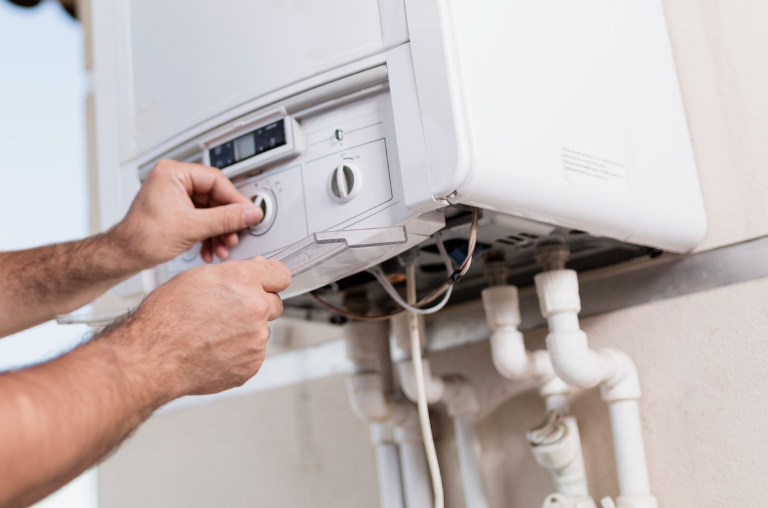
Installing a water heater may seem like a straightforward process, but it involves many technical aspects that can lead to expensive mistakes if not handled correctly. Proper installation ensures that the water heater works efficiently, has a longer lifespan, and avoids any safety hazards. Whether you’re installing a tankless water heater or a traditional tank, there are several critical mistakes to avoid during the installation process. This guide highlights the top mistakes homeowners and professionals should be aware of when handling water heater installations and provides practical advice for avoiding them. For expert help, always consider reaching out to trusted plumbing professionals like Nickelson Plumbing to ensure proper setup.
1. Ignoring the Location of Installation
One of the most common mistakes during water heater installation is neglecting the choice of location. The location of your water heater directly affects its performance and lifespan. For traditional tank heaters, insufficient ventilation or placing them in cramped spaces can lead to overheating and reduce their efficiency. For tankless models, you need to ensure there’s adequate clearance for airflow and that they’re installed near the point of demand to reduce water heating delays.
Key Points to Consider:
- Ensure there is ample space for maintenance and service.
- Avoid placing it in areas prone to freezing if your climate requires protection from low temperatures.
- Consider proximity to plumbing lines to minimize heat loss and improve efficiency.
2. Incorrect Sizing of the Water Heater
Another critical mistake is selecting the wrong size water heater. Sizing your water heater correctly based on the size of your home and household needs is essential for efficiency and effectiveness. A unit that’s too small will struggle to provide hot water, while a unit that’s too large will waste energy. To avoid overspending on energy costs, hire a professional such as Nickelson Plumbing to assess the correct size based on your household’s water usage.
How to Choose the Right Size:
- For a traditional water heater, consider the tank capacity, usually between 30 to 80 gallons.
- For a tankless heater, choose one that provides the necessary flow rate for simultaneous hot water usage in multiple locations (e.g., showers, and washing machines).
- Take into account the number of people in your home and typical peak usage times.
3. Failing to Insulate Water Heater Pipes
Insulating the pipes connected to your water heater is often overlooked during installation, leading to unnecessary energy loss and higher energy bills. Insulating the hot water pipes keeps the heat in, ensuring your water heater doesn’t have to work overtime to maintain the desired temperature.
Benefits of Pipe Insulation:
- Reduced heat loss for energy-efficient performance.
- Prevents pipes from freezing during winter months.
- Keeps your water heater’s operating costs down.
By ensuring pipe insulation during the installation process, you’ll improve overall system efficiency.
4. Not Installing a Pressure Relief Valve
The pressure relief valve is a safety feature that prevents your water heater from exploding due to excess pressure. Skipping this crucial step during installation is one of the most dangerous mistakes to avoid. A pressure relief valve allows any dangerous pressure buildup to escape, ensuring safe operation.
Installation Tips:
- Ensure the valve is connected properly to avoid damage or leaks.
- Position the discharge pipe in a safe direction that allows any excessive pressure to vent away from walls and delicate fixtures.
If unsure about the setup, call professionals like Nickelson Plumbing to ensure proper installation.
5. Failing to Perform a Gas Line Check (for Gas Heaters)
For those installing a gas-powered water heater, it’s vital to inspect the gas line for leaks. Incorrectly installing or neglecting to check the gas lines is an easily avoidable mistake. Any slight gas leak could pose serious health and safety risks, including explosions or carbon monoxide buildup.
What You Should Do:
- Use a leak detection solution or hire a licensed technician to inspect your gas connections.
- Ensure that the gas pressure and line size match the manufacturer’s specifications for optimal performance.
When in doubt, always turn to professional services like Nickelson Plumbing to verify your gas lines are secure and up to code.
6. Skipping Professional Inspection After Installation
After your water heater is installed, failing to schedule a professional inspection is a mistake you shouldn’t make. Even with correct installation, an expert inspection helps ensure that everything is functioning correctly and adhering to local codes. A professional can check for potential risks like gas leaks, improper venting, or hidden faults that could turn into larger issues later on.
Why Inspections Matter:
- They identify any hidden installation mistakes that might compromise efficiency and safety.
- Professional inspections reduce the chance of costly repairs later.
Frequently Asked Questions
1. How long does a water heater installation take?
On average, the installation of a traditional water heater takes between 3 to 6 hours, while tankless heaters can take longer due to the complex setup. Factors that may affect the time include the model, location, and the need for new pipe or gas line installations.
2. Why should I hire a professional plumber like Nickelson Plumbing for water heater installation?
Hiring a professional ensures that your water heater is installed correctly, safely, and according to local building codes. Plumbers like Nickelson Plumbing have the necessary tools, expertise, and experience to handle complex installations, minimizing the risk of mistakes that could lead to costly repairs or inefficiencies.
Conclusion
Proper water heater installation is crucial for ensuring safety, efficiency, and long-term durability. By avoiding these common mistakes—such as incorrect sizing, poor placement, and skipping essential safety checks—you can significantly reduce the risk of costly repairs and inefficiency. If you’re unsure about any aspect of installation, consult with professionals like Nickelson Plumbing who can guide you through the process and ensure a successful setup. Investing in a proper installation now will save you time, money, and hassle in the future.